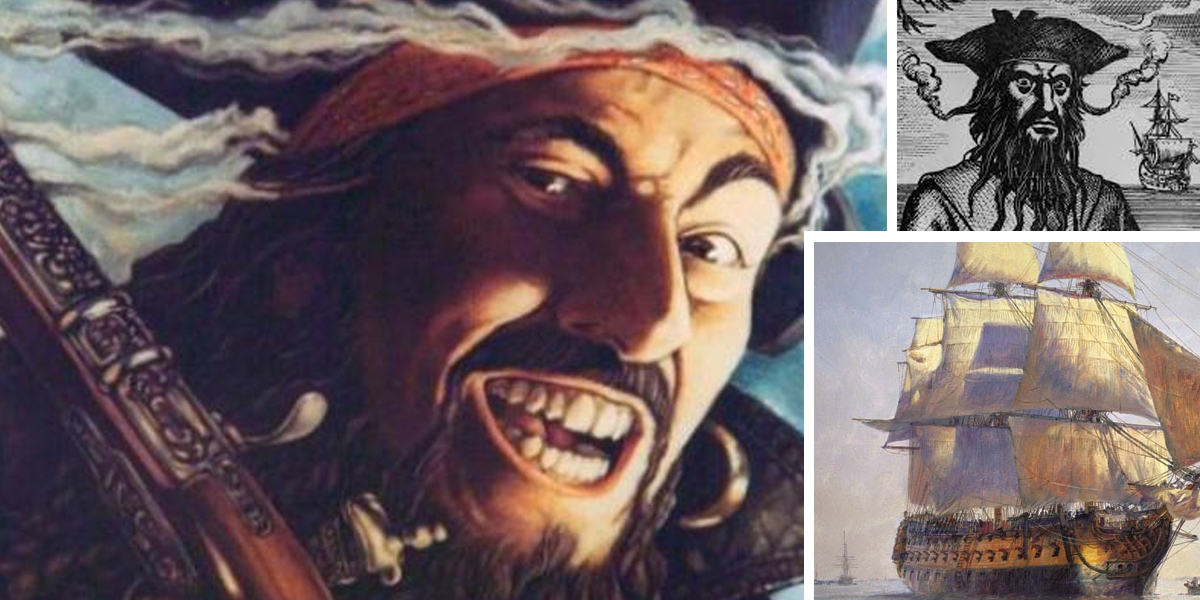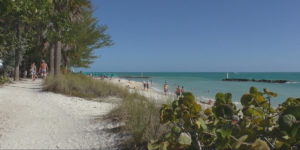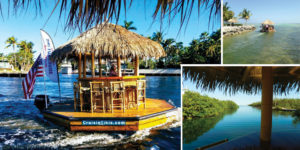The notorious pirate known as Blackbeard, was actually the British-born Edward Teach. Teach learned his pirating skills in the Bahamas, where he worked for the seasoned pirate Captain Benjamin Hornigold. When Hornigold retreated from piracy in 1717, his prodigy took over and set his sights on the Americas. He renamed himself Blackbeard after his thick wiry beard which he braided and tied with black ribbons. To appear more menacing, he developed the habit of lighting his braids on fire.
With his new personna, he embarked on a campaign of terror, menacing the waters leading to Chesapeake Bay, Philadelphia and New York.
Blackbeard’s tactics were to be unpredictable. He rarely remained in one place for more than a day or two. He often attacked under cover of darkness, approaching unsuspecting ships in the wee hours of the morning, and used grappling hooks to pull his victim close.
One of his first conquests was the French salver ship, La Concorde, that he re-christened the Queen Anne’s Revenge.
With this new faster flagship, he set off to the Lesser Antilles to continue his rampage.
In the Caribbean, he gained notoriety as he overtook numerous ships, and pillaged and burned down towns and fleets of vessels in the ports of Guadelupe and St. Kitts. In the waters north of St. Vincent, he captured the Boston based ship the Great Allen. He mercilessly left the entire crew of the Great Allen to perish on the largely uninhabited island of Martinique, with no rations or fresh water. Then he burned the ship at sea.
Next, he sailed North to Charleston harbor. He blockaded the harbor for six days, ensnaring all passing vessels, kidnapping the passengers and demanding ransoms for them.
Blackbeard continued to be a menace to the Southern Coast of America for many years. He based his operations on Ocaracoke island off the coast of the Carolinas. This proved to be the perfect vantage point for him to view ships in transit and plan to plunder them.
In May of 1718, he was captured, but negotiated a pardon with Charles Eden, a corrupt Governor of North Carolina. The Governor got rich in exchange for Blackbeard’s amnesty.
After being pardoned, Blackbeard appeared to become a law-abiding citizen. He built a home in Bath, the capital of North Carolina, and charmed his way into polite society. He took a wife, and won the favor of neighbors with his charitable contributions of money, rum and sugar.
Yet the pirate continued his attacks unimpeded via his cohorts.
Eventually, a neighboring Governor, Alexander Spotswood vowed to put an end to his exploits by collaborated with the Royal Navy. Captain Maynard of the Royal Navy captured Blackbeard and shot him several times. then he beheaded him and threw his body into the sea. Blackbeard’s bloody skull was returned to the Carolina’s and rewarded to Governor Spotswood as a trophy that was displayed on a pole for all to see in a place known today as Blackbeard’s point.




